Managing Burnout In IT: Insights From IT Leaders
IT professionals often work in demanding environments ripe for burnout. How prevalent is burnout, and how are IT leaders managing it on their teams?
One minute insights:
 The majority of IT leaders have observed burnout among their direct reports within the past year, identifying it as a prevalent concern in the workplace — and many IT leaders admit to experiencing it personally
The majority of IT leaders have observed burnout among their direct reports within the past year, identifying it as a prevalent concern in the workplace — and many IT leaders admit to experiencing it personally Work overload consistently ranks as the top contributor to burnout, signaling the importance of managing work demands
Work overload consistently ranks as the top contributor to burnout, signaling the importance of managing work demands Lack of control and mismatched work values also play a role in burnout, suggesting the importance of job autonomy and alignment
Lack of control and mismatched work values also play a role in burnout, suggesting the importance of job autonomy and alignment IT leaders frequently raise burnout as a topic in both team meetings and one-on-one meetings, and many indicate they have confidence in their ability to manage burnout
IT leaders frequently raise burnout as a topic in both team meetings and one-on-one meetings, and many indicate they have confidence in their ability to manage burnout The perceived recovery time from burnout with managerial support spans a wide range, with most believing between two weeks and two months is typical
The perceived recovery time from burnout with managerial support spans a wide range, with most believing between two weeks and two months is typical
Most IT leaders say workplace burnout is evident within their teams
84% of IT leaders perceive that at least one of their direct reports have shown signs of burnout in the recent year
Burnout in the workplace refers to a state of physical, mental and emotional exhaustion caused by chronic work-related stress. In your assessment, do you believe any of your direct reports have experienced burnout in the last 12 months?

n = 268
Note: May not add up to 100% due to rounding
Work overload stood out as the primary cause of burnout, with 68% of IT leaders attributing it to their direct report(s)’ burnout. The other significant factors were a lack of control (46%) and insufficient recognition and reward (43%).
One-fifth of respondents cited an aggressive workplace environment as a contributing factor.
In your assessment, what factors contributed to your direct report(s)’ burnout? Select all that apply.
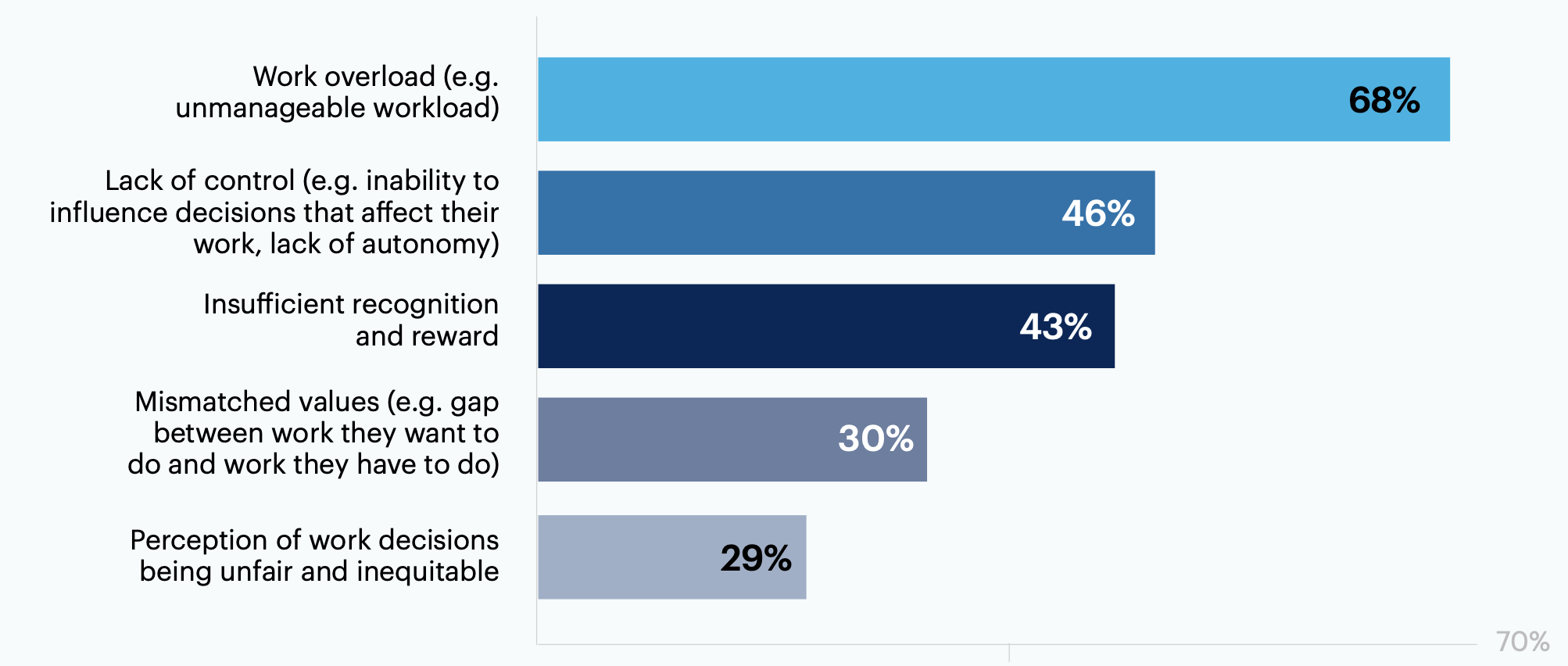
n = 225
Aggressive workplace environment 20% | Factor(s) not listed here 13% | Other* (fill in) <1% | Prefer not to say 0% | Not sure 0%
*Other includes: “Reductions in force” Question shown only to leaders who answered “yes” to the question “In your assessment, do you believe any of your direct reports have experienced burnout in the last 12 months?””
Question: Do you have any final thoughts to share on employee burnout in IT?
[Employee burnout in IT is] a very real issue especially with the negative state of the economy and poor company financials limiting new hires.
It’s usually the result of a combination of personal life issues, and the behaviors of leadership, stakeholders and team resources.
A majority of IT leaders report they’ve personally experienced burnout, with an unmanageable workload cited as a leading cause
Personal experiences with burnout were also prevalent, with 60% of respondents acknowledging they’ve felt burnout in their role in the past 12 months.
Have you personally experienced burnout in your role during the last 12 months?
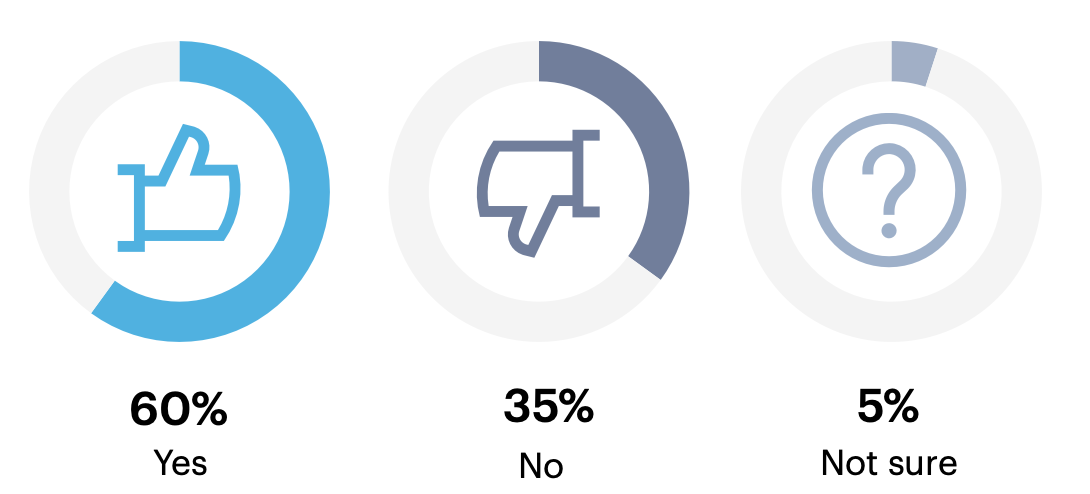
n = 268
Note: May not add up to 100% due to rounding
Like their employees, IT leaders primarily attributed their burnout to work overload, with 67% citing an unmanageable workload.
While they identified the same leading causes of burnout for themselves as they did for their employees, the rankings differed. Specifically, IT leaders placed greater emphasis on insufficient recognition and reward (47%) over lack of control (45%).
What factors contributed to the burnout you experienced in your role? Select all that apply.
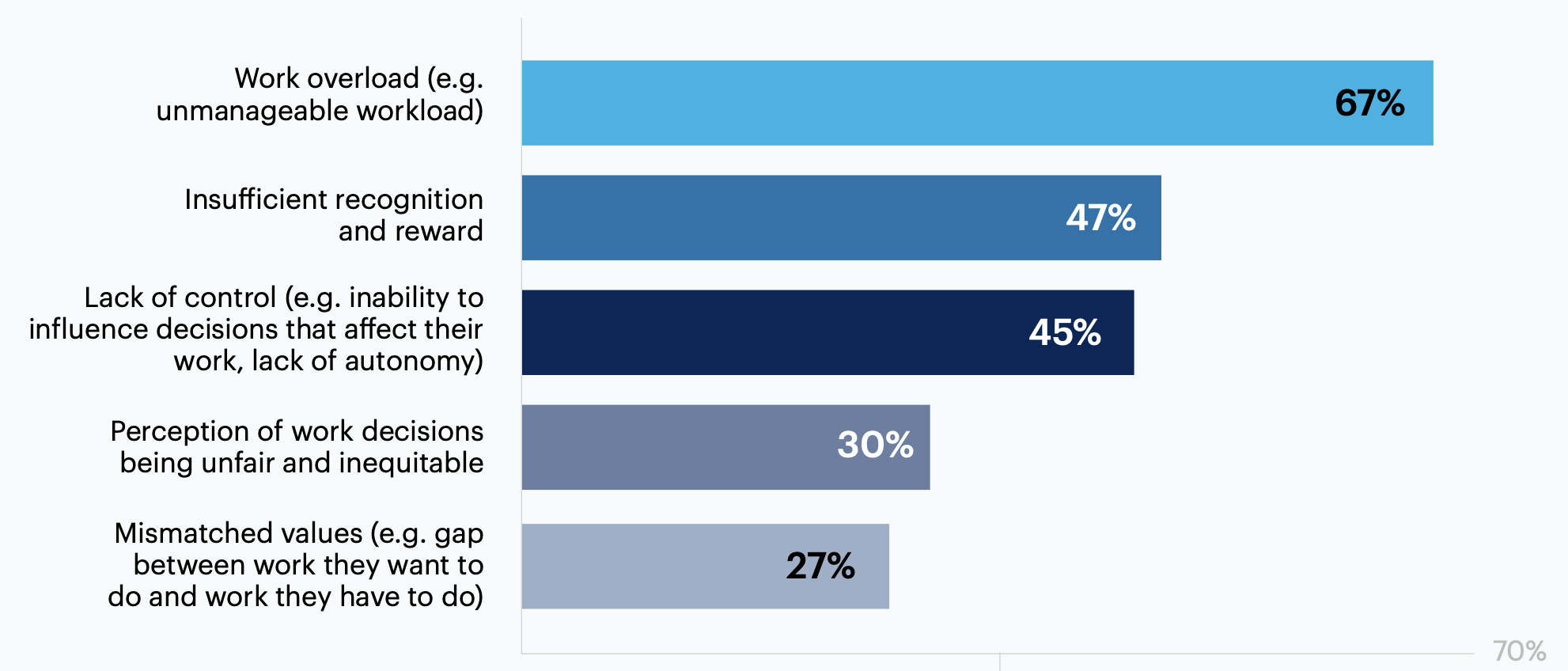
n = 161*
Aggressive workplace environment 20% | Factor(s) not listed here 10% | Prefer not to say 1% | Other* 1% | Not sure 0%
*Other includes: “Layoffs,” “Disagreement with my boss on how we run the business”
Directors, C-suite members more likely to report feelings of burnout than those with a Vice President title
Among the respondents who experienced burnout (n = 161), those with a director job level led at 48%, followed by those in the C-suite (36%). Only 16% of those with a Vice President title reported experiencing burnout. Work overload was the top cited contributing factor to burnout for all three levels.
For the C-suite (n = 58), an aggressive workplace environment (24%) was more frequently cited as a burnout trigger compared to director-level respondents (17%).
On the other hand, C-suite members were less likely to cite lack of control (41%) and a misalignment in values (22%), compared to director-level respondents.
Lack of control was cited by 53% of directors. Mismatched values — referring to the gap between work they want to do and work they have to do — were cited by 29% of directors.
What factors contributed to the burnout you experienced in your role? Select all that apply. (C-suite respondent results)
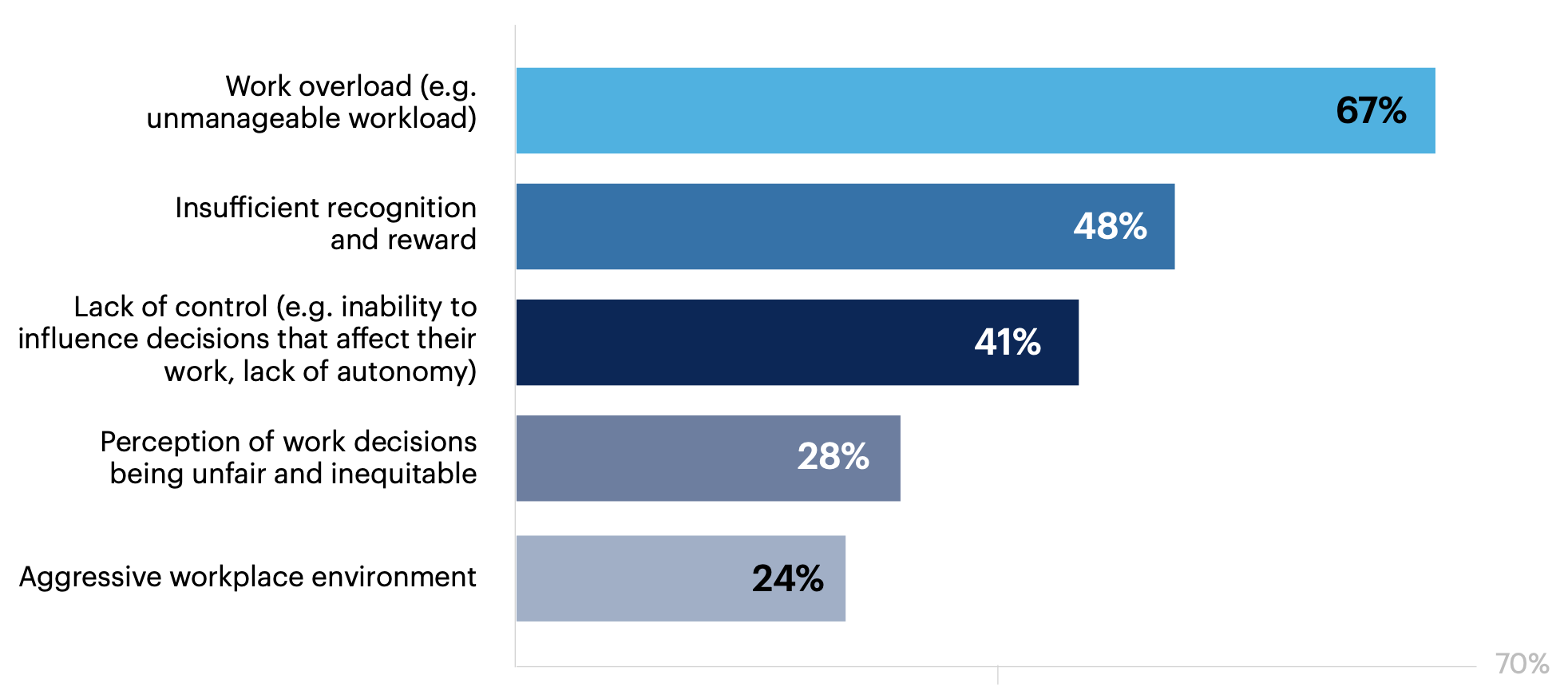
n = 58
Mismatched values (e.g. gap between work they want to do and work they have to do) 22% | Factor(s) not listed here 14% | Prefer not to say 2% | Other 0% | Not sure 0%
IT leaders feel largely capable of managing employee burnout
78% of IT leaders have proactively addressed burnout in team meetings with their direct reports over the past year.
In the last 12 months, have you proactively brought up burnout as a discussion topic when leading team meetings with your direct reports?
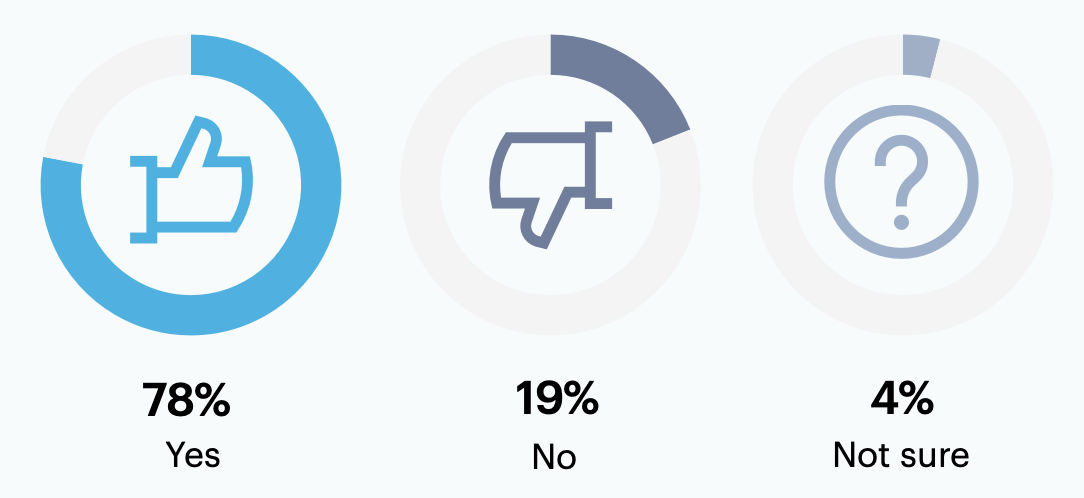
n = 268
Note: May not add up to 100% due to rounding
In one-on-one meetings, IT leaders say they most commonly bring up the topic of burnout monthly (26%), weekly (17%) or quarterly (13%).
How often do you personally bring up burnout as a discussion topic in 1:1 meetings with your direct reports?
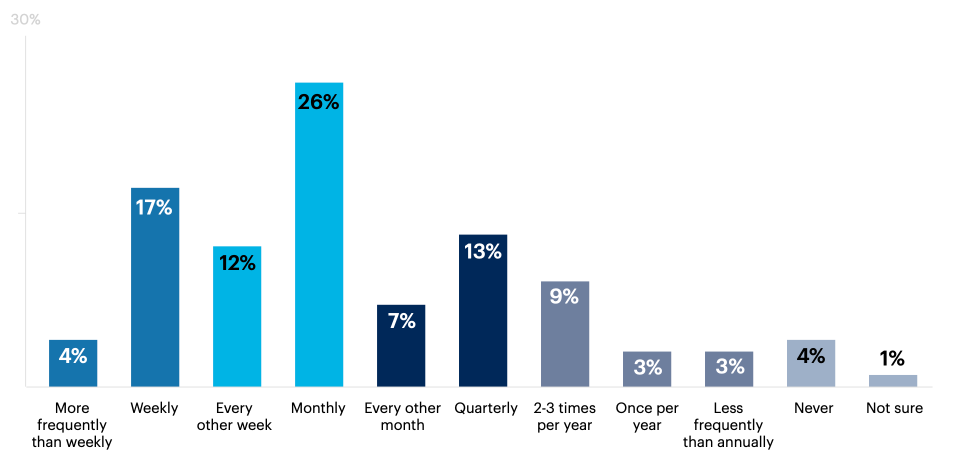
n = 268
Note: May not add up to 100% due to rounding
The majority of IT leaders feel either somewhat confident (42%) or mostly confident (41%) in their ability to manage burnout in their direct reports.
How confident are you in your ability to manage burnout if it emerges in your direct reports?

n = 268
Not sure 0% | Prefer not to say 0%
Note: May not add up to 100% due to rounding
Question: Do you have any final thoughts to share on employee burnout in IT?
A good manager should be able to recognize the signs of burnout and act accordingly. Promptly responding to signs of burnout, and following through on action plans, are the keys to success.
While we don’t regularly discuss it, we do look for the typical signs of burnout so that we can be somewhat proactive in addressing it.
I wasn’t aware that a regular conversation could be beneficial.
There are times where employees tend to resist the acceptance of burnout. As a manager, one will need to assess the workload and look for other indicators like loss of performance, being late for meetings, etc. to identify burnout and take action.
Resources for burnout are prevalent, recovery time remains subjective
While 60% of IT leaders stated their organizations offer some or limited resources to address employee burnout, nearly one-quarter (24%) said there were no specific resources in place.
Are there specific resources in place at your organization to address employee burnout when it arises?

n = 268
When asked about recovery timeframes for employees who have experienced burnout, just over one-third (36%) of IT leaders believe between 2 weeks to less than 1 month is a reasonable timeframe for an employee to recover from burnout with manager support. One-quarter of respondents (26%) estimated between 1 month to less than 2 months.
In your opinion, with appropriate support from their manager, what is a reasonable timeframe for an employee who has experienced burnout to return to their full capacity?
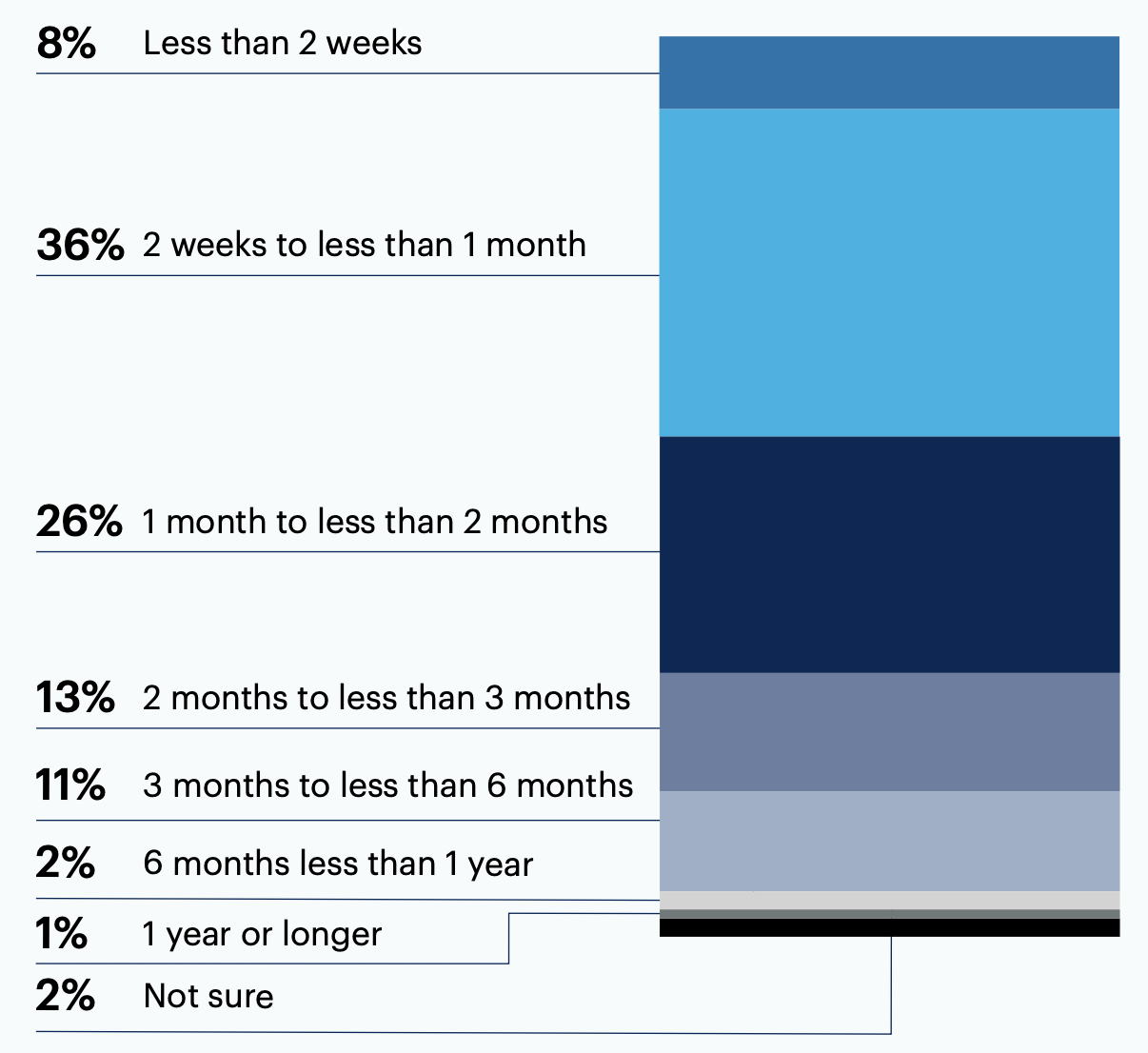
n = 268
Note: May not add up to 100% due to rounding
Question: Do you have any final thoughts to share on employee burnout in IT?
Returning to work after burnout should be subjective to the situation and the employee. There can be [a] suggested timeframe but a person’s mental health and readiness should not be defined by a calendar alone.
I think it’s a continuous process and we need to have [a] defined framework for employee well-being at [the] workplace as an essential practice.

Want more insights like this from leaders like yourself?
Click here to explore the revamped, retooled and reimagined Gartner Peer Community. You'll get access to synthesized insights and engaging discussions from a community of your peers.
Respondent Breakdown
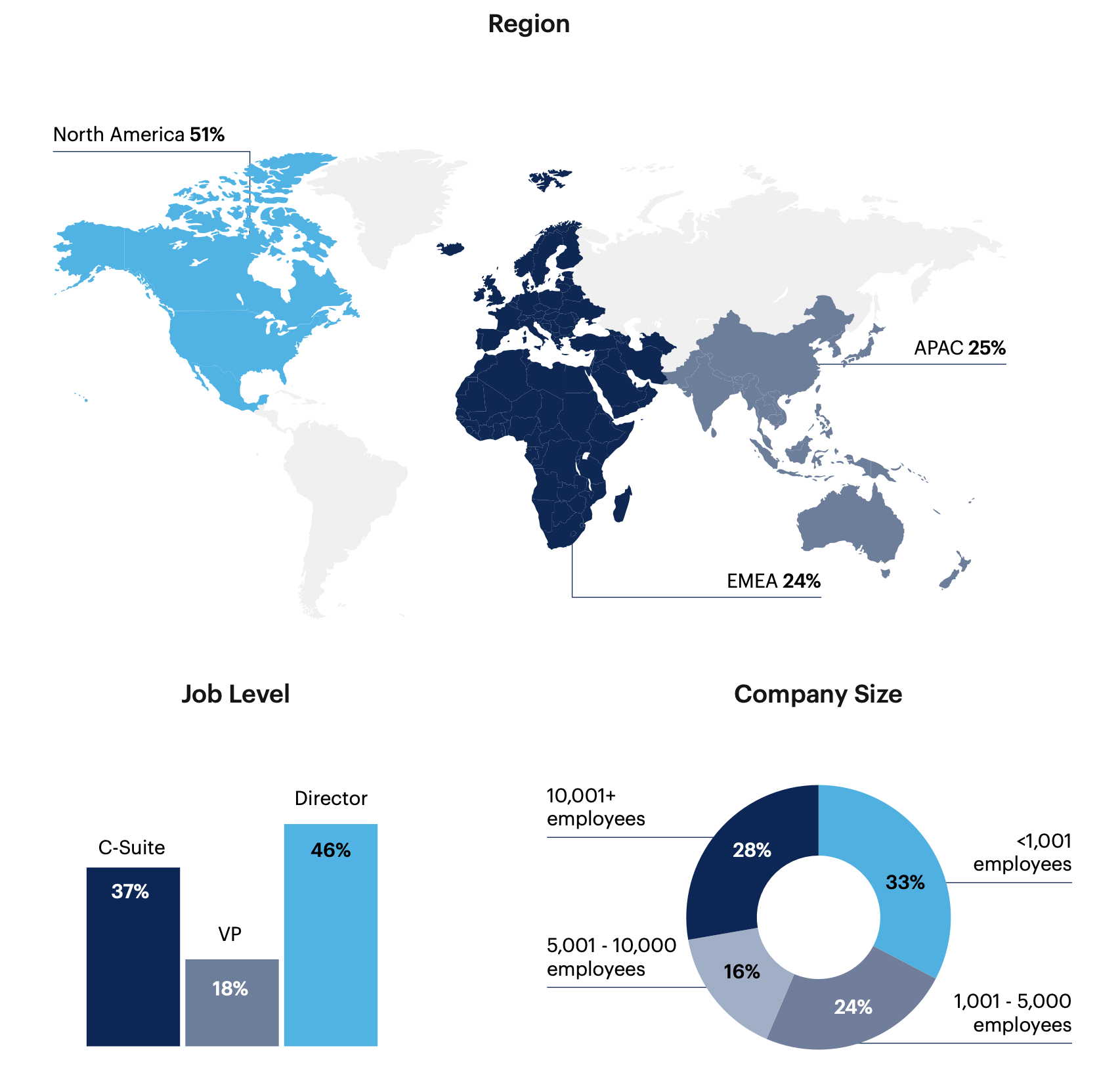
Note: May not add up to 100% due to rounding.
Respondents: 268 IT leaders (Director, VP, C-suite) whose current role involves managing people